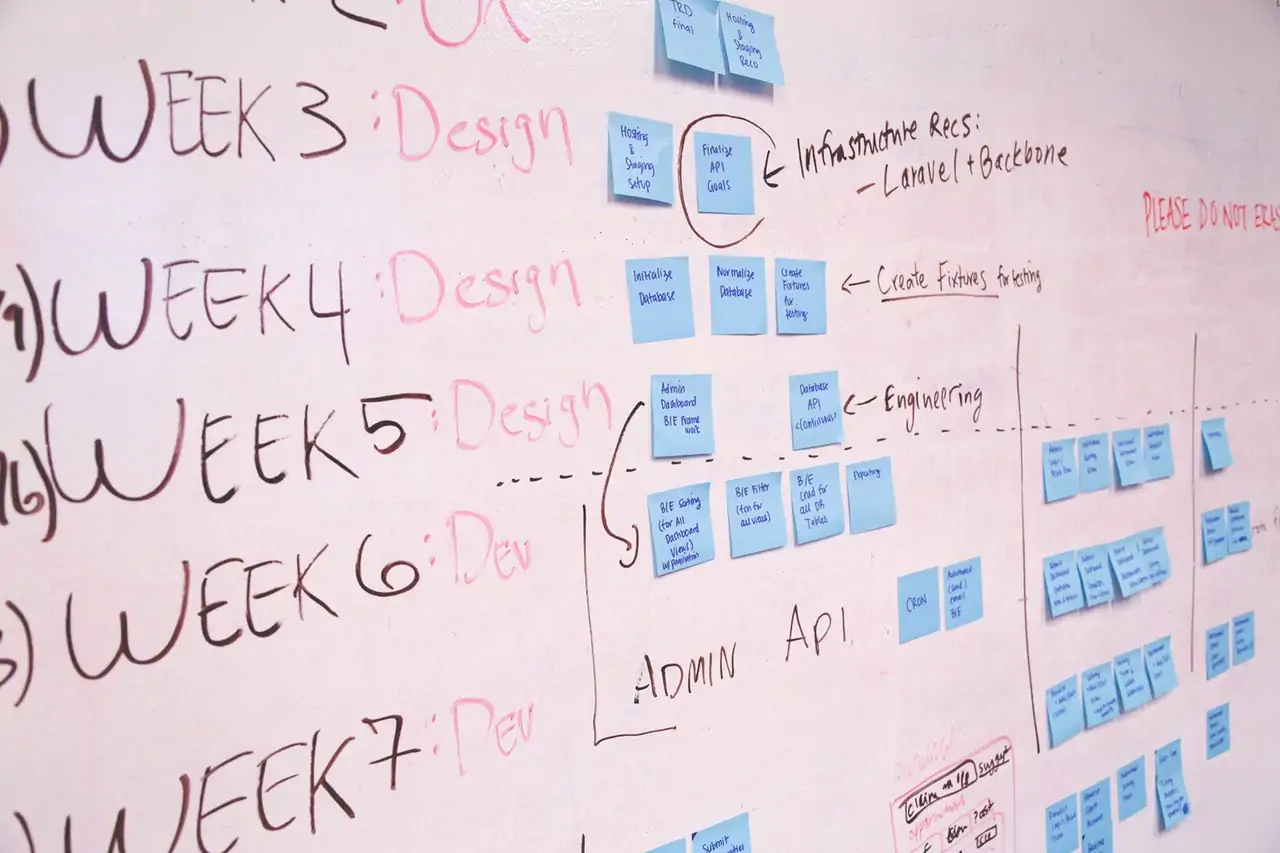
- admin
- July 11, 2019
- 1:39 pm
How to Set Effective Goals with Employees and Boost Performance
Taking a personalized and strategic approach to setting goals with employees is arguably the most effective way to boost their performance. Gallup found that 69% of employees whose managers help them set goals are engaged compared to only 8% that don’t.
Not only does their engagement boost their productivity and motivate them to perform their best, it also ensures that they’re focused on activities that directly contribute to your organization’s goals as opposed to projects that are less relevant.
To get those benefits, you can’t just quickly assign every member of your team a goal. Instead, you need to set strategic goals, communicate them effectively, and empower your team to be successful. Here’s how.
Connect Goals with Broader Organizational Objectives
A study published in Harvard Business Review found that only about half of top employees understand how their goals fit in with their company’s broader objectives. This lack of awareness about the purpose of individual goals often causes misunderstandings about the goals themselves and which projects are the highest priority.
For example, if an employee is working on three projects, they may invest the majority of their time and energy into the one that they think is most important and rush through the one that’s the true priority for your organization.
To ensure your employees are focused on the right priorities and understand why their work matters, connect all of their goals to your broader organizational objectives so that they can see how what they’re working on fits into the bigger picture.
Here are some examples:
- Our goal is to improve the accuracy of our data analysis software by 20%. Doing so will enable us to surpass the quality of our competitor’s products and increase market share.
- Our goal is to create systems that reduce manufacturing energy usage by 15%. Doing so will contribute to our commitment to lowering our carbon dioxide emissions by 50% within the next ten years.
- Our goal is to increase revenue by 25% this year. Doing so will give us a chance at appearing on the fastest-growing companies list.
By making sure employees are aware of the big picture visions behind their goals, you enable them to focus on long-term results instead of just the specific goal they’re working to achieve.
Read More: 4 Goals Every Growth-Driven Manager Should Have
Involve Employees in the Goal Setting Process
Research estimates that only 30% of managers involve their employees in goal setting. This is a huge missed opportunity since involving your team in the goal-setting process has several benefits including:
- Enabling you to assign goals to different members based on their strengths and interests.
- Encouraging employees to be more invested in their goals since they had a say in choosing them.
- Enabling you to incorporate your team’s ideas to create more impactful goals.
While you already have broad organizational objectives, you can involve your employees in deciding how to achieve those objectives.
For example, if you’re leading a sales team, your overall is probably to increase revenue by X%. There are a variety of ways you can achieve that goal. So, have conversations with your team to get their ideas and choose which smaller goals each individual is going to be responsible for achieving.
For best results, engage in goal setting discussions every time your employees finish a project and will have more bandwidth and/or alongside your quarterly performance reviews.
Read More: How to Inspire Goal Commitment from Your Team
Create Actionable Milestones
If you want your employees to be successful, you need to provide them with actionable milestones that offer a clear picture of what they need to do to be successful.
According to Gallup, only about half of employees fully understand their goals at work. The remaining half who are unsure what exactly their managers expect of them are significantly less productive since they waste time trying to figure what to do and/or producing undesirable deliverables.

Setting goal milestones with your employees empowers them to be successful by:
- Making ambitious goals seem more attainable by breaking them into quantifiable pieces.
- Ensuring they have an accurate understanding of what is expected of them. This prevents your team from wasting pursuing the wrong ideas.
- Giving you set times to check-in and assess goal progress. If they fail to meet milestones and/or do them wrong, it gives you early opportunities to step in and help them improve.
To increase the likelihood of success, you should discuss goals with employees and create milestones that:
- Have an objective definition of completion. For example, the campaign copy is drafted and ready for editorial review, or you’ve completed fifty introductory sales calls.
- Be realistically able to be achieved by the deadline. Milestones are only useful if they’re attainable. So, review how long it took your team to finish similar projects and use that to map out project duration.
- Add up to achieve the goal. The most effective milestones drive goal completion by ensuring that once all milestones are completed successfully, so is the larger goal.
The bottom line is creating actionable milestones gives your employees the structure they need to be successful.
Read More: 6 Office Productivity Hacks to Boost Employee Performance
Consider Constraints Outside of Your Team’s Control
Your team’s ability to achieve their goals may be subject to a variety of external factors that are outside of their control. Prior to assigning your team goals, assess if there are any constraints that would make it significantly more challenging for them to be successful.
If there are, you need to address them so that your team doesn’t feel like they’re doomed to fail from factors outside of their control.
There are two ways to do that:
- Lower your goals so that they are easier to achieve. Do this when the goals are not essential to your organization’s success and/or you don’t expect to generate an ROI if you choose option two.
- Provide your employees with additional resources to overcome the constraints. Just because there are barriers, doesn’t mean you have to be less ambitious – you just need to invest more in your team to enable them to be successful.
For example, let’s say you’re leading a B2B marketing team and your goal is for them to increase leads by 5% every month. However, December is a historically slow month for your company since so many of your prospects are busy and/or out of the office for much of the month. Ad costs also skyrocket during this time.
You could accept that December is going to be a slow month and significantly lower your lead goals. Or, if you still want to see high leads, you can address the constraints and empower your team to offer a steep holiday discount and/or significantly increase their budget for the month.
It’s important to approach external factors on a case-by-case basis to determine if you’ll generate a greater ROI from lowering expectations or increasing investment.
Read More: 4 Compassionate Ways to Boost Employee Efficiency
Give your Employees a Sense of Purpose
According to bestselling author and futurist, Jacob Morgan, helping employees have a sense of purpose in their work is one of the most effective ways to sustain their motivation and engagement.
Here are some ways to set goals that give employees a sense of purpose:
- Share how the goals enable the company to have a positive impact on society. For example, if your company donates a percentage of sales to charities, you can share the impact that your company’s contributions have on those organizations.
- Explain to individual employees how the projects they’re working on contributing to your organization’s success.
- Celebrate small successes on a regular basis so that while your team is working to achieve long-term goals, they can feel proud of what they’ve accomplished so far.
Constantly reinforcing the deeper purpose of the goals you set encourages your employees to remain committed to your organization.
However, intrinsic incentives alone likely won’t be enough to sustain employee motivation as they pursue challenging projects. As you’re setting goals, you should also plan extrinsic incentives such as free lunches when milestones are completed and bonuses when goals are achieved.
By involving your employees in the goal-setting process, creating structures that empower their success, and providing incentives, you’ll be able to lead your team to continuously perform better.
Give Your Employees the Gift of Productivity
One of the most meaningful ways to show your employees you appreciate them is by giving them more time to focus on the work they love. Learn how to give your employees the gift of productivity by checking out our free guide How to Give Your Team Leverage with Virtual Assistants. In it, you’ll learn:
- What kinds of time-saving tasks your team can offload
- How we work with you to maximize the ROI of our service
- Our process for securely leveraging your systems
Help Your Team Succeed
Get This Guide For Free
Download Now
Categorized
Posts you might also like...

6 Leadership Quotes on Delegation to Inspire You to Greatness
February 5, 2023

How a Delegative Leadership Style Improves Team Success
February 5, 2023

How to Use MOCHA to Delegate Effectively
February 5, 2023

